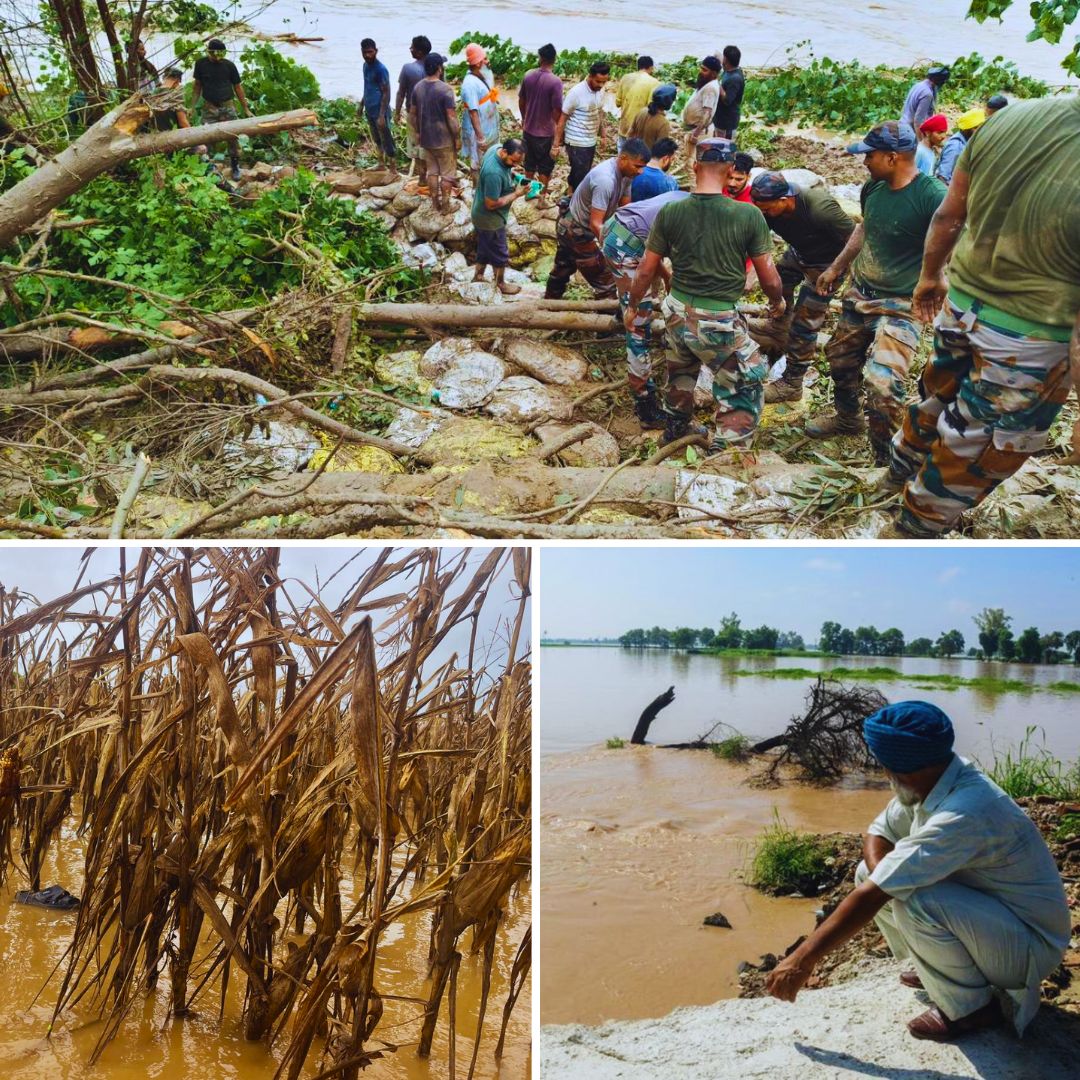Severe floods in Punjab during late August 2025 have devastated the state’s green cover by uprooting nearly 5 lakh trees over 776 hectares. The floods, triggered by intense monsoon rains combined with critical water releases from reservoirs, submerged more than 1,900 villages, inundated over 1.7 lakh hectares of farmland, displaced nearly 4 lakh people, and caused 48 deaths.
The Punjab Forest Department confirmed that large-scale afforestation efforts, key to combatting climate change and land degradation, suffered major setbacks. Government and disaster response teams are providing relief and are planning for large-scale reforestation initiatives as the state recovers from its worst flood crisis in decades.
Widespread Destruction of Forests and Farmland
Punjab’s flood crisis has severely impacted agricultural and ecological landscapes, with the Forest Department reporting 4,94,956 trees uprooted mainly from plantations along riverbanks and floodplains. This destruction undermines years of government and community-driven tree planting campaigns aimed at enhancing the state’s shrinking green cover, which currently stands below the national average at 3.67%.
Over 1.76 lakh hectares of crops such as paddy, basmati rice, maize, wheat, sugarcane, and cotton have been submerged or ruined. Farmers and local residents expressed their distress over both crop and tree losses, as the green cover had played a vital role in soil protection, microclimate moderation, and livelihood support.
Relief operations by the National Disaster Response Force, Indian Army, and local authorities have evacuated over 22,000 residents from the worst-hit areas and set up hundreds of relief camps.
Causes: Climate Change, Infrastructure Neglect, and Man-Made Factors
Experts and officials attribute the floods to heavy rainfall in upstream Himalayan catchments, coupled with the release of water from major reservoirs including Bhakra, Pong, and Ranjit Sagar dams at near-full capacity. Poor infrastructure maintenance such as incomplete canal desilting and weak embankments aggravated flood impacts. Unregulated construction on floodplains, illegal tree-felling, and inadequate governance of water release protocols worsened the situation, reflecting lessons unlearned from previous flood disasters dating back to the devastating 1988 floods.
Climate change has intensified monsoon unpredictability, making extreme rainfall and flooding more frequent and severe. Environmentalists stress that long-term, integrated climate adaptation, river basin management reforms, and stricter regulations on floodplain development are urgently needed to mitigate future crises.
Efforts and Next Steps for Recovery and Resilience
Union and state government officials have pledged financial aid and coordinated relief efforts while assessing the full scope of agricultural and environmental damage. The Agriculture Minister visited affected villages, assuring farmers of comprehensive support and emergency packages.
Authorities reported gradual floodwater recession due to controlled dam water releases and favourable weather forecasts, enabling schools and businesses to reopen progressively. Priorities now include clearing silt deposition from fields, rebuilding embankments, and restarting afforestation drives with more resilient tree species tailored to withstand future climatic stresses. Multiple central teams have been deployed to prepare detailed damage reports and guide recovery planning for communities and ecosystems alike.
The Logical Indian’s Perspective
Punjab’s catastrophic floods starkly underscore the fragile balance between nature’s fury and human stewardship. The destruction of close to half a million trees reflects not just an ecological loss but a setback against climate resilience and rural well-being.
The Logical Indian urges a holistic rethink-combining sustainable urban and rural planning, proactive disaster management, and renewed commitment to ecological restoration. Only through empathy for affected communities, dialogue among stakeholders, and shared responsibility can India cultivate a future where its green cover and farmers thrive amidst changing climates.












